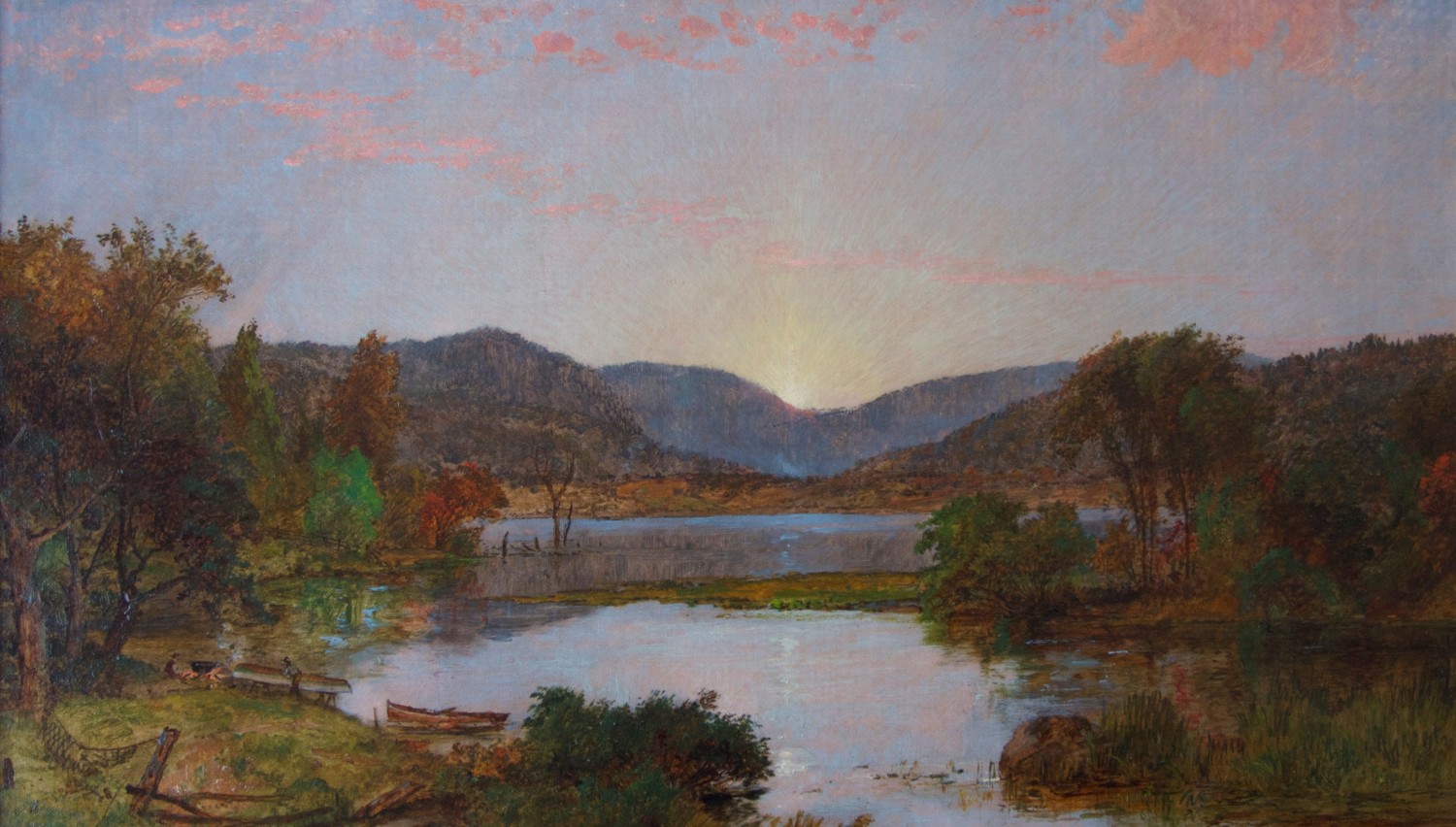Born on a farm on Staten Island in 1823, Jasper Francis Cropsey suffered recurring stints of poor health as a young boy. While absent from school, he taught himself to draw by sketching architecture and landscapes. At thirteen, he submitted a scale model of a country home to the annual exhibition of the Mechanics’ Institute of New York and won a medal for his design, capturing the attention of New York architect Joseph Trench. Cropsey spent the next five years serving as Trench’s apprentice, who encouraged his young protégé to incorporate background detail and even narratives into his architectural drawings, introducing him to landscape painter Edward Maury. Although his acute draftsmanship insured his reputation and financial success as an architect, it was the act of drafting a blueprint on paper, rather than the physical execution of his design that sparked the young Cropsey’s enthusiasm. His fluency with watercolors prompted him to explore oil as a new medium in 1841, and he familiarized himself with the new method of execution by copying existing artworks, including his own watercolors.
After spending several years in his own studio, submitting works to various exhibitions around New York, Cropsey and his new bride left the country in the summer of 1847 to travel England and Italy with fellow American painters Christopher Pearse Cranch and Thomas Hicks, and sculptor William Wetmore Story. Cropsey even worked out of the former studio of Thomas Cole, the founding father of the Hudson River School while in Rome. You can see evidence of Cole’s influence in some of Cropsey’s landscapes. They did not return to the United States until 1849, at which time Cropsey was ready to make painting a full-time practice. During this prolific period in his career, Cropsey not only produced in high volume, making frequent visits to the White Mountains, the Catskill Mountains, Greenwood Lake, and Newport, Rhode Island, but he also became mentor to his own set of young pupils, which awarded him academician status in the National Academy in 1851.
Leaving the United States again in 1856, the Cropseys settled down in the Kensington district of London, which they called home for the next seven years. Arriving with already commissions from American patrons for paintings of castles and abbey ruins, Cropsey kept himself busy traveling the English countryside. He also completed one of his greatest works, Autumn—On the Hudson River in 1860, which received widespread acclaim and public recognition from both Queen Victoria and the London Press. The masterpiece also earned him international prestige as “America’s painter of autumn.” When he wasn’t painting, he kept company with some of the most influential figures in the British art world, including the director of the National Gallery, Sir Charles Eastlake, as well as author and pioneer of the Pre-Raphaelite movement, John Ruskin. By the 1880s, Cropsey could no longer support the opulent lifestyle he had created for himself, so the couple settled down in a modest home in Hastings-on-Hudson, New York, where he spent the rest of his life painting his backyard overlooking the Palisades until he passed away in 1900.

